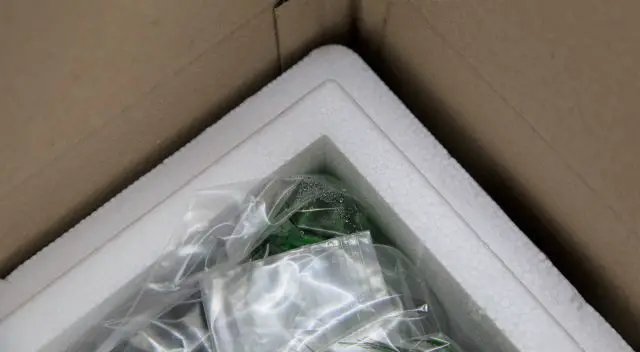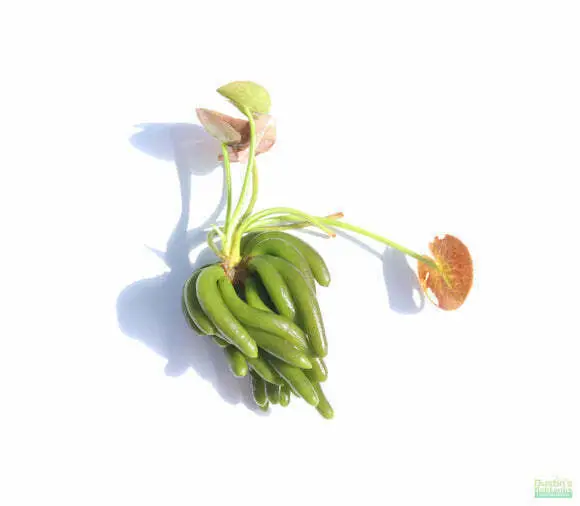How to Ship Aquarium Plants?
To ship aquarium plants, you’ll need to properly prepare them for transit. Start by removing the existing substrate from the roots of each plant. Then, rinse off any debris and inspect the plant for signs of disease or decay.
Once they are clean, dip each plant in a fungicide solution to prevent infections during shipping. Afterward, wrap them in damp newspaper and secure it with tape or rubber bands. Finally, place all wrapped plants inside a plastic bag filled with water before packaging them up in an appropriate box filled with packing materials such as foam peanuts or bubble wrap for cushioning.
Include plenty of air holes so that oxygen can circulate around the plants throughout their journey.
- Step 1: Gather the Supplies – You will need an appropriate shipping box, packing materials such as styrofoam peanuts or air bubble wrap to cushion the plants and absorb any shock during transit, tape for sealing the package, and a marking pen for labeling
- Step 2: Pack the Plants Properly – Place each plant in its own plastic bag filled with water to keep them hydrated during transport
- Wrap each plant individually in moist paper towels and secure it with rubber bands
- Place these bundles inside the box surrounded by additional packing materials like foam or newspaper
- Step 3: Seal the Box – Once all of your plants are safely inside their new home, securely seal up your box using strong packaging tape along all edges of the lid or flap
- Make sure that no moisture is able to escape from within so that your aquatic plants remain healthy until they reach their destination
- Step 4: Label Your Package – Finally, affix a label onto your shipment indicating where it’s coming from and where it’s going so that there is no confusion when it arrives at its final destination
How to Ship Floating Aquarium Plants
When shipping floating aquarium plants, it’s important to make sure they are packaged correctly in order to ensure that they arrive safely. Start by wrapping the plant in damp newspaper and then place the plant inside a sealed plastic bag filled with water. Make sure the bag is tightly sealed so no air can escape and secure it with tape or rubber bands.
Place this package inside another larger container filled with packing peanuts for extra protection during transit. Finally, label your package clearly as fragile and live material before sending it off!

Credit: www.youtube.com
How are Aquatic Plants Shipped?
Aquatic plants are shipped using specialized carriers that have the necessary temperature controls and humidity levels to ensure the plant’s health during transport. Shipping aquatic plants can be tricky, as they require a certain water temperature and special packaging materials in order to stay healthy. In most cases, aquatic plants are either sent bare root or potted with sphagnum moss.
The packing material should prevent moisture loss, while allowing oxygen exchange so the roots remain healthy. To protect the plant from extreme temperatures during transit, some nurseries add a layer of foam insulation on top of the potting medium before shipping it out. During shipment, aquatic plants must also be kept at an optimal range of temperatures (45-85 degrees Fahrenheit).
Carriers use cooling systems like gel packs or dry ice along with insulated containers to keep their cargo within this range; however these systems may not always provide adequate protection if the weather is extremely hot or cold during travel time. Of course, proper labeling is essential when sending any type of live product through mail so that it arrives safely and doesn’t get confused with other packages en route!
Can Aquarium Plants Survive Shipping?
Aquarium plants are an important part of any tank and can add beauty, color, and oxygen to the water. But some people worry about whether or not these delicate plants will survive shipping. The good news is that aquarium plants CAN survive shipping!
With proper packaging, careful handling, and timely delivery from a reliable seller, your aquatic plants should arrive safely at their destination.When packing live aquarium plants for shipment it’s essential to keep them wet; however never submerge them completely in water as this could create air bubbles which can be fatal once exposed to air pressure during transit. Wrapping the roots with damp newspaper or moss helps keep moisture around the plant while protecting its fragile leaves and stems from being crushed by other items in the package during shipment.
A small plastic bag filled with enough water to cover the roots is also an effective way of keeping them hydrated while they travel through different temperatures on their journey.It’s also important to make sure that your aquatic plant order arrives quickly so that it doesn’t spend too much time in transit without proper care or temperature monitoring. Look for online sellers who specialize in aquarium supplies such as Live Aquatic Plants who offer fast shipping options so you get your new additions quicker than ever before!
By following these simple steps, you can ensure that your aquarium plants have a safe trip from point A to B.
How Do You Prepare Aquarium Plants for Shipping?
Preparing aquarium plants for shipping is an important step in ensuring that they arrive at their destination safely. To start, you should make sure to remove any dead or dying leaves and prune the plant to its ideal size for transport. Also, be sure to check the roots of each plant; if they are too long or tangled, trim them back so that the plant can fit into a smaller container during transit.
Additionally, before packing your plants up, give them a light rinse with dechlorinated water and allow them time to air dry completely. This will help minimize the risk of rot while in transit. Once you have prepared your aquarium plants for shipping, it’s important to choose appropriate packaging material such as bubble wrap and newspaper which can provide cushioning during transportation – this is especially important when transporting fragile items like aquatic plants!
Finally, clearly mark boxes with “Live Plant” labels so that handlers know how special care needs to be taken. By following these steps when preparing aquarium plants for shipping you can ensure that your precious cargo arrives safe and sound at its final destination!
How Much Does It Cost to Ship Live Plants?
When it comes to shipping live plants, the cost will depend on a variety of factors including the type and size of the plant, weight and distance traveled. If you are shipping within your own country, standard ground delivery typically ranges from $15-$45 for a single shipment but can be more depending on size or other considerations. If you need to ship internationally then additional charges may apply such as customs fees and taxes that vary by country.
Some companies also offer expedited services which usually come with an extra fee but can help ensure that your plants arrive quickly and safely. Additionally, if you’re sending fragile items like bonsai trees or large cacti then they should be wrapped in packing materials such as bubble wrap before being packaged securely in a box for transport. Taking these steps can help protect your plants during transit and reduce the overall cost associated with shipping them around the world!
HOW TO PACK AND SHIP AQUARIUM PLANTS 💧 | 🌱 DAILY TRIM 32
Conclusion
Shipping aquarium plants is a great way to get the plants you need for your tank without having to leave home. With careful packaging and following these steps, you can ensure that your plants arrive safe and healthy. By taking the time to properly package and ship them, you can make sure they have a successful journey so that they are ready for planting in their new home when they arrive.
Shipping aquarium plants is an easy way to get the variety of fish tank flora your tank needs!






